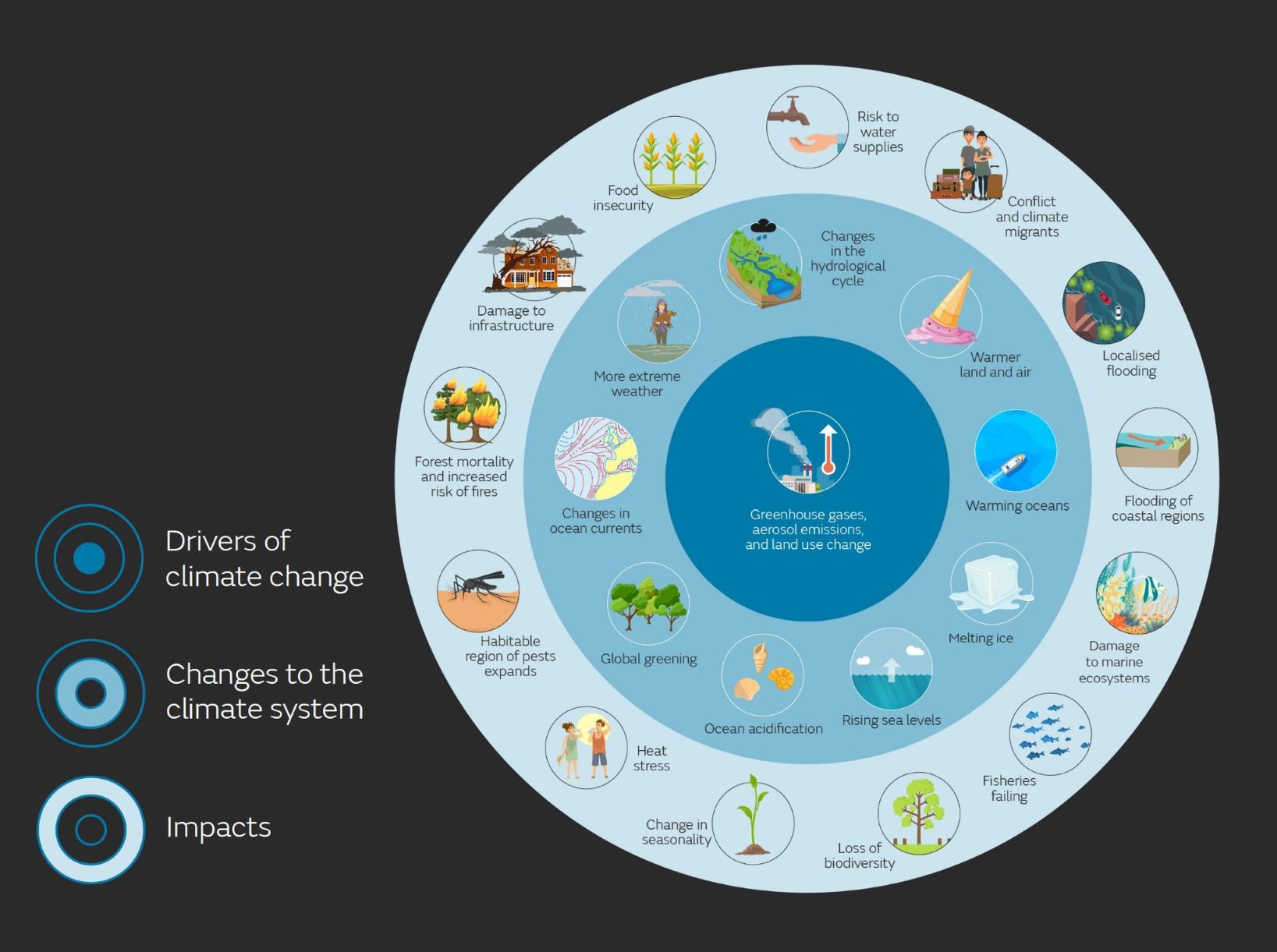
With a 2☌ increase, extreme hot days in the mid-latitudes will be about 4☌ hotter (7.2☏) than pre-industrial levels.Ī study on extreme heat published around the same time as the U.N.With a 1.5☌ increase, extreme hot days in the mid-latitudes will be 3☌ hotter (5.4☏) than pre-industrial levels.
Impacts of climate change infographic how to#
Read: Checklist: How to take advantage of brand-new clean energy tax credits Extreme heat Here are some highlights (only some of which included a specific “by-this-time” estimate): The widely publicized “1.5☌ Report,” as it’s come to be known, offered a straightforward comparison between the consequences of a 1.5☌ future and a 2☌ future. Every bit of warming matters,” Petteri Taalas, of the World Meteorological Organization, and Joyce Msuya, of the United Nations Environment Programme, wrote in the forward of the 2018 report. “There are clear benefits to keeping warming to 1.5☌ rather than 2☌ or higher. It ends up that the differences are significant. Still, with a focus solely on those 1.5☌ and 2☌ global temperature increases, what difference does it make in a practical sense in terms of impacts? (Keep in mind that there’s no science suggesting that the warming of the planet’s atmosphere will magically stop at that 2☌ limit indeed, just the opposite). Sign up for our weekly email newsletter and never miss a story.Īs the planet perhaps inevitably closes in on and goes beyond that 1.5☌ target, it’s reasonable to wonder how a world with “just” that degree of warming would compare with a world where global temperatures rise by 2☌ or more above preindustrial levels.

The climate is changing, and our journalists are here to help you make sense of it. A United Nations report in 2018 concluded as much, saying back then that average global temperatures will likely reach 1.5☌ above pre-industrial levels sometime between 20 if emissions continue rising as they have been. The aspirational or wished-for objective of the agreement is to strive for a rise in temperatures that doesn’t exceed 1.5° C (an increase of 1.5☌ = about 2.7☏ of additional warming, an increase of 2☌ = about 3.6☏).īut with carbon dioxide levels in the global atmosphere topping 420 parts per million – the highest level in recorded history – the 1.5☌ target appears to many experts to be out of reach.

The essential goal of the Paris agreement of 2015 has been to limit the rise in average global temperatures to no more than 2☌ above pre-industrial levels – a time period centered roughly on the mid-19 th century. Secretary-General António Guterres said back in 2018 in his address to the UN General Assembly – a statement that in hindsight now rings especially true.Īt more than 420 parts per million, atmospheric carbon dioxide levels are the highest in recorded history … and still climbing.* “Climate change is moving faster than we are,” U.N. Collectively, they all point to a world in the grip of weather extremes fueled by the continuing rise of emissions of human-made (technical term: anthropogenic) atmospheric carbon dioxide.Īpproaching November 2021, when the 26th United Nations Climate Change Conference of the Parties (COP26) is to convene in Glasgow, Scotland, amid continuing global pandemic concerns, the reality is that the number and severity of extreme weather events are overtaking efforts to reduce global greenhouse gas emissions. These too: Oregon, California, Montana, and other parts of the West experiencing searing wildfires Īnd this: New York City, Philadelphia, and the Nation’s Capital and other parts of the eastern seaboard shrouded in western wildfire smoke Īnd keep this in mind: Rising concerns of a “megadrought” across several western states.Īnd these are just in the first half of one year, 2021. Pacific Northwest and in British Columbia and Siberia Īnd this: Historic flooding in Germany and other parts of Western Europe Remember these: Severe heat waves in U.S.


 0 kommentar(er)
0 kommentar(er)
